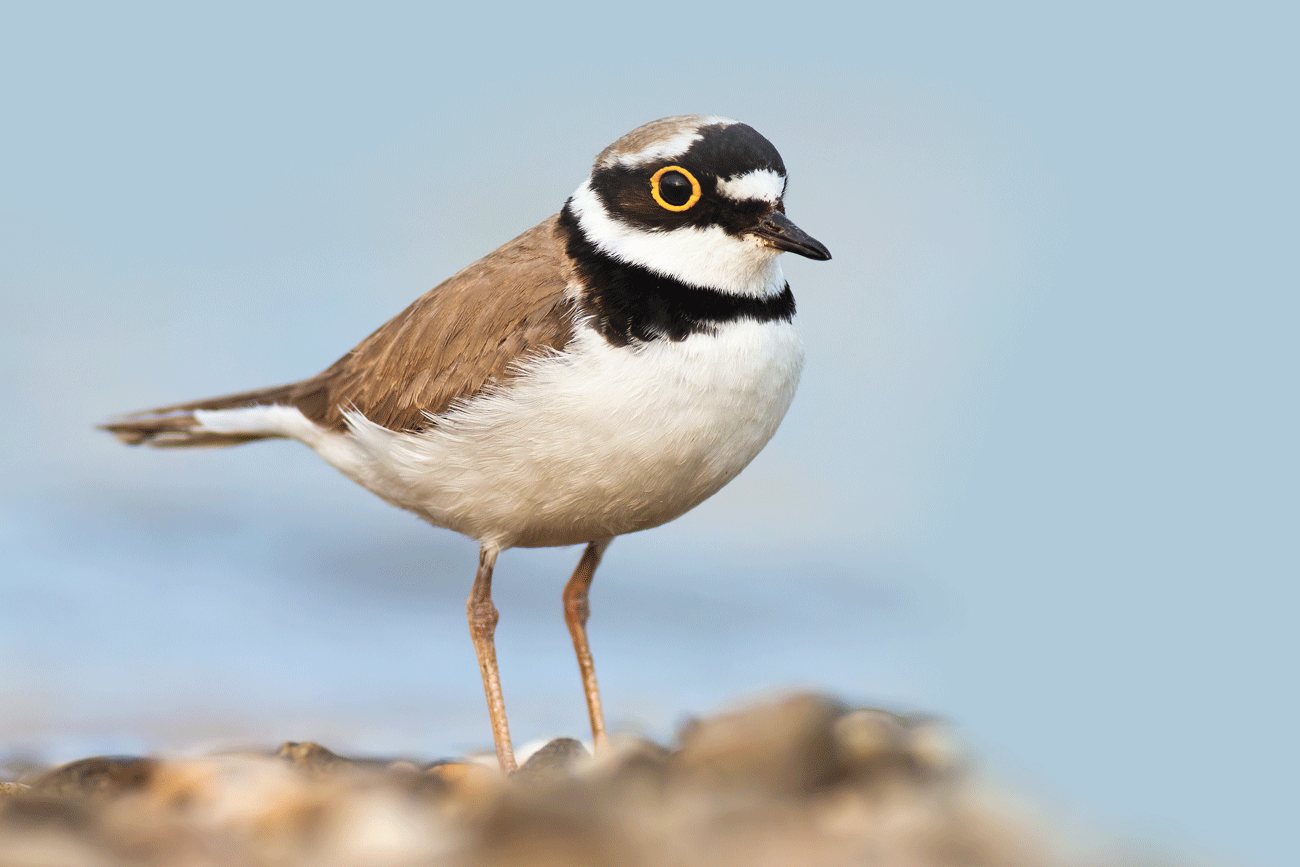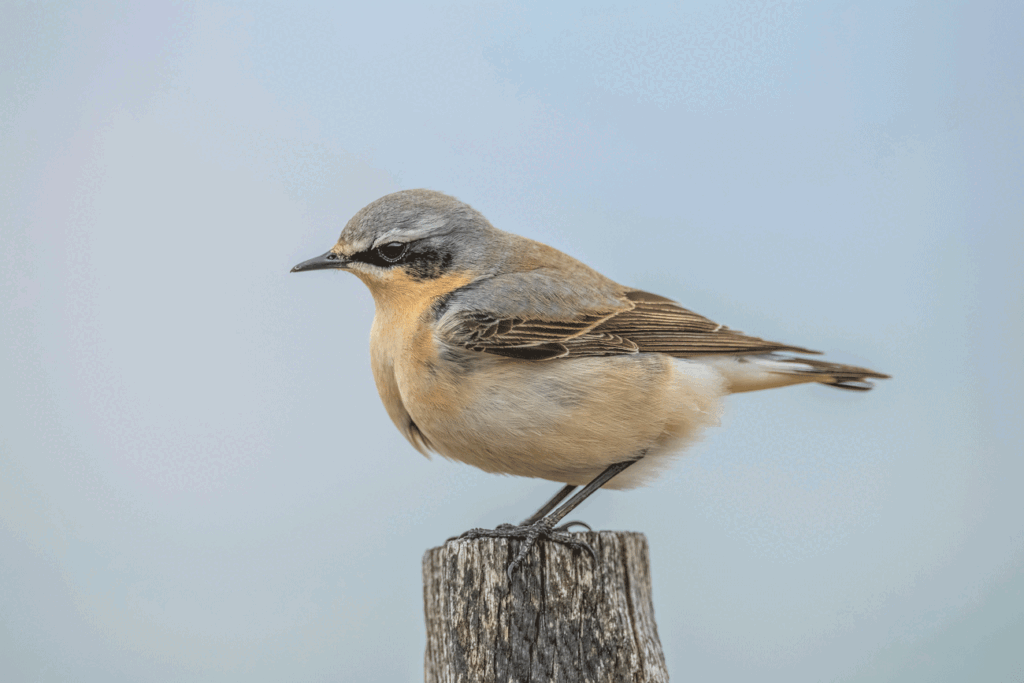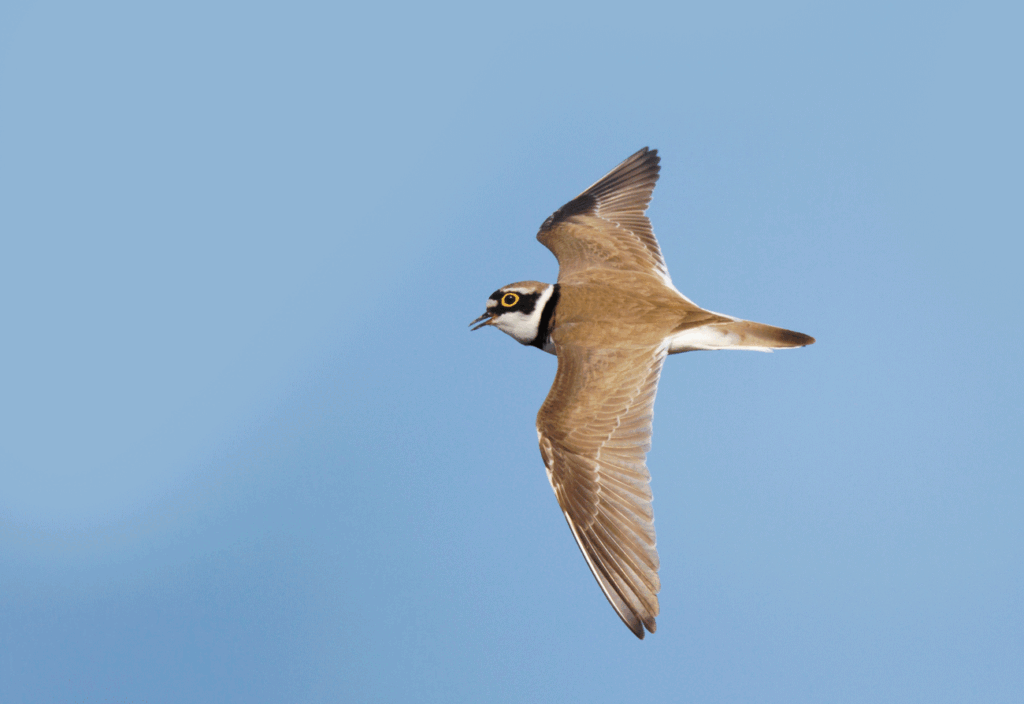
Main Photo – Litte Ringed Plover (Charadrius dubius)
It’s always nice to go ‘shopping’ and to return with something exciting you weren’t expecting to find.
And that was the case for me back in March when I tramped out into a grey and gusty morning in the hope of finding an early Wheatear around the local fields.
Male Wheatears are beautiful and an early sign that spring, better weather and more avian visitors from Africa will soon be with us. Hurrah.
They stop off to feed in suitable ploughed fields and lift the hearts of eager watchers who like to be among the first to find them.
I therefore ventured out after days of foul rain and flooding that opened up yet more potholes in Cranleigh’s roads.

My target field was a rare one indeed. No green grass to be seen – just brown mud, huge puddles and the leftovers of last season’s maize crop. Plenty of worms and insects were therefore available. It was a likely recipe for some tasty bird visitation.
After weeks of searching I had already found small numbers of our locally rare and declining plover, the Lapwing, flying around noisily in wide figures of eight to mark their territory.
Maybe a Wheatear would be present after all the rain. I used a fence for cover and raised my binoculars. The first bird I saw was right in front of me, standing out brightly in some sunlight now filtering through the drizzle. It took me by complete surprise. ‘LRP!’ I said out loud.
Here was a bird much rarer than a Wheatear – a dainty wading fella that had never even bred in Britain until just before World War II. A Little Ringed Plover.
There are only a handful of records in Surrey each year from outside half a dozen favoured sites, and sometimes these are only a single sighting of one bird. Two is most unusual.
The only previous Cranleigh area records were back in 1989 when a pair tried to breed but were unsuccessful, probably due to fox predation. As many as six were present on one day during the April to July period.
I scanned right and quickly noticed a second bird. That was a big bonus because they usually turn up only singly.

LRPs are striking birds with brownish wings and upperparts, white underparts, dull pinkish legs, and a chocolate brown collar. The dark colouration features in a band stretched over the mainly white head, joined by others from the base of the bill to the eyes and beyond. Subtle golden rings feature around the birds’ dark eyes.
I can only assume this pair were grounded by the bad weather on their long journey from somewhere in the west of Africa. They winter across that continent and breed in much of Asia and Europe. Here they are at the western edge of their vast range and there are reckoned to be only around 1,300 pairs.
If we had gravel workings in this village they might have stayed because they love to breed in industrial landscapes, even though their ground nests are at the mercy of boots and bulldozers.
But after feeding up it seems the attention of predatory gulls and a pesty Peregrine in the area persuaded them to move on. I checked the next day and saw only one, and not thereafter.
And it was a very good job I did go back. Because if I hadn’t then I would never have made an even more stunning discovery.
The field was now turning into something more resembling an RSPB marsh and there among the Lapwings I was stunned to find a third species of plover. This bird has not been recorded in Cranleigh before so I was well chuffed. I’ll relate that story next month.











